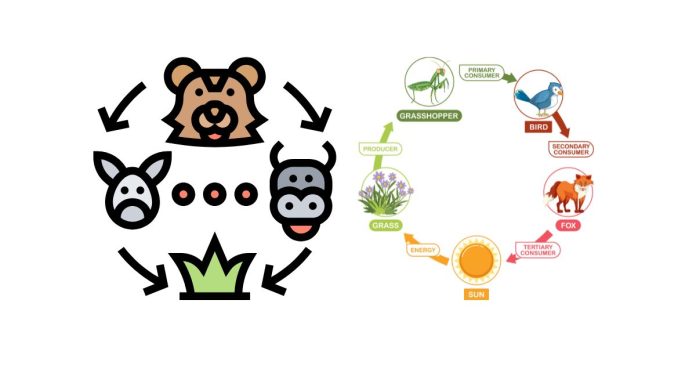In the intricate web of the food chain, every organism plays a specific role in the transfer of energy and nutrients. One of the most important roles is that of the primary consumer, but what exactly does that mean, and which animals fit into this category? Let’s break down the concept and learn more about primary consumers in the food chain.
What Is a Primary Consumer?
A primary consumer is an organism that feeds directly on producers—plants or algae—at the very start of the food chain. These consumers are herbivores, meaning they rely on plant material as their main food source. Primary consumers are an essential link in the food chain because they convert energy from plants into a form that can be consumed by higher-level predators.
Examples of Primary Consumers
Here are some common examples of animals that are primary consumers:
- Grasshoppers: These small insects are herbivores that feed on grass and other plants, making them key primary consumers in many ecosystems.
- Deer: Deer are larger herbivores that graze on shrubs, leaves, and grasses, contributing significantly to their food chain.
- Cows: In agricultural ecosystems, cows are classic primary consumers that feed on grass and other vegetation.
- Rabbits: Rabbits feed on a variety of plants, including grasses, herbs, and vegetables, making them important primary consumers in forest and meadow ecosystems.
- Elephants: These large herbivores eat vast amounts of plant material, such as grass, fruits, and bark, and are primary consumers in their habitats.
- Koalas: Koalas primarily feed on eucalyptus leaves, making them specialized primary consumers in Australian ecosystems.
The Importance of Primary Consumers
Primary consumers play a crucial role in maintaining balance in ecosystems. They control plant populations by feeding on them, preventing any single species from becoming overabundant. Without primary consumers, producers would thrive uncontrollably, and there would be no energy passed on to secondary consumers (carnivores or omnivores) higher up the food chain.
The Food Chain Hierarchy
To better understand the position of primary consumers, here’s a simplified breakdown of the food chain:
- Producers (plants and algae) – These are the foundational organisms that capture sunlight and convert it into energy through photosynthesis.
- Primary Consumers (herbivores) – These animals feed on producers and convert plant energy into their own.
- Secondary Consumers (carnivores or omnivores) – These animals eat primary consumers.
- Tertiary Consumers (apex predators) – These predators are at the top of the food chain and often have few or no natural enemies.
Primary consumers are essential players in the food chain, converting plant matter into energy that sustains higher-level predators. From small insects to large herbivores, these animals help maintain the balance of ecosystems and ensure the flow of energy throughout the food web.
What are your favorite primary consumers in nature? Share your thoughts or ask more questions about the food chain in the comments below!


